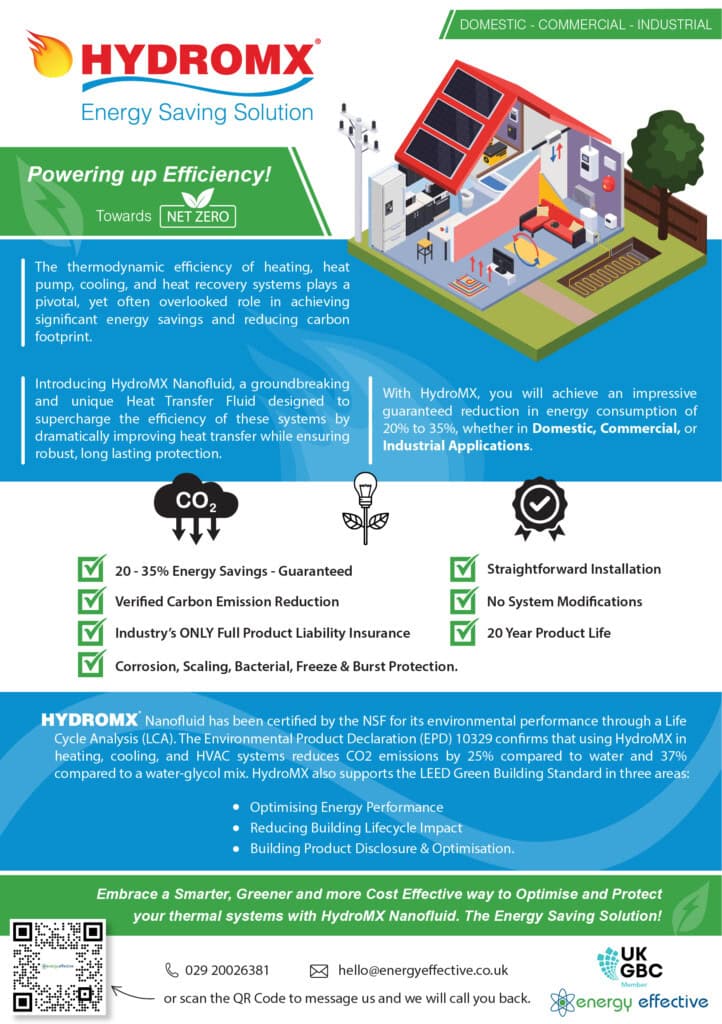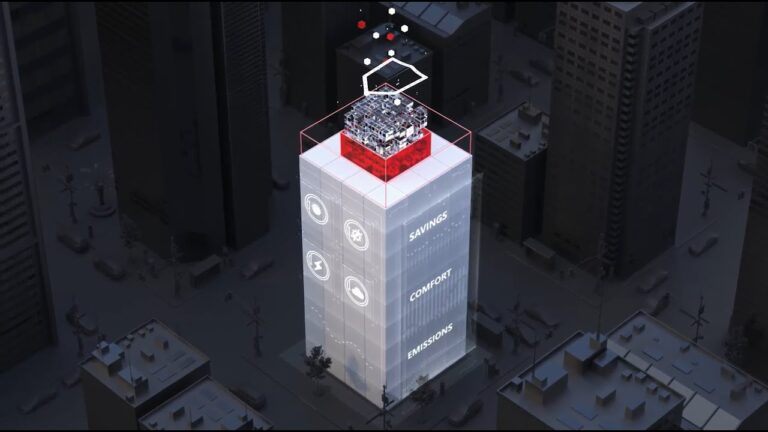Heat transfer fluid reducing energy consumption of HVAC systems

Problem Addressed
This solution was sourced in response to UKGBC’s Innovation Challenge: “How can existing buildings be made more resilient to climate change, with as little disruption to their occupants as possible, by 2030?”
Achieving major reductions in building energy usage is a significant challenge – and doing so without causing significant disruption to the users is even more difficult.
Solution Overview

Verification & Case Study
The simplest way to verify a heating system is to record usage data and external temperature for a suitable period of time prior to installation of HydroMX, and then repeat the recording for a similar period and compare the usage during the two periods and then adjust for differences in the external temperatures. This may be done using degree days or, more accurately, by recording the external temperatures and using these records for comparison. HydroMx gives equally good results on central heating systems.
Case study
HydroMX was installed in a children’s ward in a Birmingham hospital without any disturbance to the staff or patients, with the whole process taking less than half a day. The gas meter for the building provided data of energy usage, the thermostat in the ward ensured a consistent comfort temperature inside the ward and Degree Days were obtained from a local weather station, enabling an analysis to be carried out quite simply. The results were:
- 33% saving in energy and carbon reduction.
- Payback less than one year.

Facts and Figures
This page presents data, evidence, and solutions that are provided by our partners and members and should therefore not be attributed to UKGBC. While we showcase these solutions for inspiration, to build consensus, and create momentum for climate action, UKGBC does not offer commercial endorsement of individual solutions. If you would like to quote something from this page, or more information, please contact our Communications team at media@ukgbc.org.
Related
Smart Building Optimisation Services

Improved monitoring and collaboration for property teams

Tech to help organisations manage their sustainability goals.

Autonomous AI HVAC optimisation

